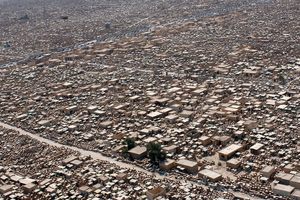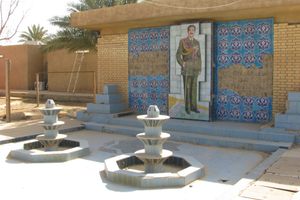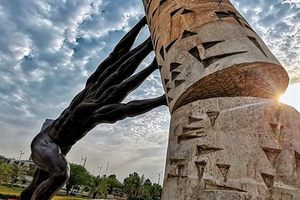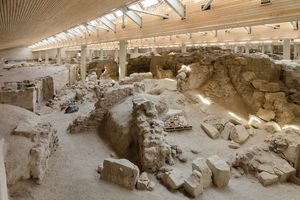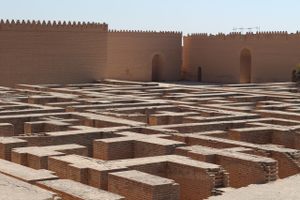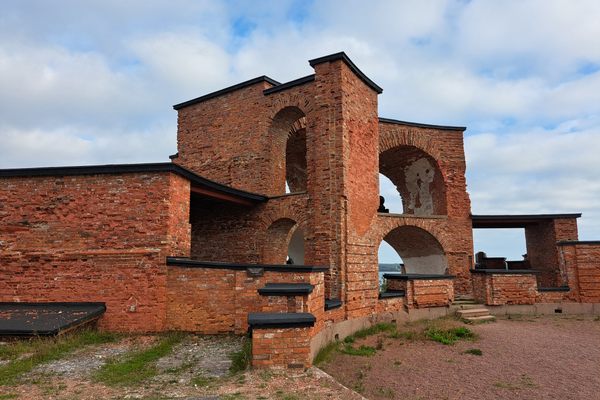About
After colonial looting, the narcissistic dreams of a dictator, and the heavy mark of war, the legendary city of Babylon has almost vanished.
The ancient city was the capital of the Mesopotamian dynasties. Its final glory was as capital of the kingdom of Babylonia under King Nebuchadnezzar II, who ruled from 605 to 563 BCE. During his reign, most of the buildings represented by the surviving ruins were constructed, including two grand palaces. The Hanging Gardens of Babylon, built by Nebuchadnezzar for his wife Amytas, are remembered as one of the Seven Wonders of the Ancient World. He also expanded his territory by forcing thousands to relocate, starting the first exile in Jewish history. Babylon's remains, mounds of mud-brick buildings spread over about 30 square kilometers, are in present-day Iraq, south of Baghdad.
Starting in 1983, Saddam Hussein, imagining himself as heir to Nebuchadnezzar, ordered the rebuilding of Babylon. Like Nebuchadnezzar, Hussein had his name inscribed on the bricks, which were placed directly on top of the ruins, some 2,500 years old. A sample inscription translates to: ''In the reign of the victorious Saddam Hussein, the president of the Republic, may God keep him, the guardian of the great Iraq and the renovator of its renaissance and the builder of its great civilization, the rebuilding of the great city of Babylon was done in 1987.'' Hussein also added huge portraits of himself and Nebuchadnezzar at the entrance of the ruins.
As most Iraqi men were fighting the bloody Iran-Iraq war, he brought in thousands of Sudanese workers to lay new yellow bricks over the old mud construction where Nebuchadnezzar's palace had stood. No one is sure what the palace looked like, but that didn't stop Hussein's garish and quick reincarnation of the old splendor.
At the end of the Persian Gulf War, he commissioned a palace over more Babylonian ruins, in the same pyramid style as a Sumerian ziggurat, calling it Saddam Hill. The massive gaudy structure almost completely covered the original ruins, outraging archaeologists. Hussein's plans for a cable line running over the Babylon site were halted with the 2003 invasion.
Before Hussein's reconstruction, there had already been destruction from the shifts in rivers and deserts, and still more from colonial powers. Germans took the Ishtar Gate, which is now in the Pergamon Museum in Berlin, while the French took ceramics, and the Turks used Babylonian bricks to build dams on the Euphrates.
The occupation of US forces also damaged the site. Following the 2003 invasion, the US camp Alpha was set up on the ruins. Areas were leveled to create landing pads for helicopters and parking lots for vehicles. Tanks rumbled over the ancient bricks, and Polish troops dug trenches through a temple. Soil holding artifacts and bones was scooped into sandbags. And even the military presence couldn't keep out looters, who ransacked Iraq's more than 10,000 historic sites after the invasion.
But there is hope. With the end of his rule, Hussein's ego-driven reconstruction of Babylon was stopped. In 2006, UN officials and Iraqi leaders stated their intentions to restore Babylon into a cultural center. It's estimated that 95 percent of Babylon could be hidden in the unexcavated mounds at the site. In 2009, the ruins and Hussein's palace were opened to tourists. While there is much enthusiasm for archaeological research and restoration of the site, the colossal disfigurement may take decades to reverse.
Related Tags
Community Contributors
Added By
Published
June 30, 2013
Sources
- http://articles.latimes.com/2008/dec/14/world/fg-iraq-palace14
- http://www.nytimes.com/2003/08/19/world/hussein-s-babylon-a-beloved-atrocity.html
- http://www.nytimes.com/2006/04/18/world/middleeast/18babylon.html
- http://www.aina.org/news/20100508123552.htm
- http://artsbeat.blogs.nytimes.com/2009/01/07/project-created-to-restore-ancient-babylon/
- http://www.britishmuseum.org/explore/highlights/highlight_objects/me/c/cylinder_of_nebuchadnezzar_ii.aspx
- http://www.wsu.edu:8080/~dee/MESO/CHALDEAN.HTM
- https://www.unusualtraveler.com/visiting-the-ruins-of-babylon/















